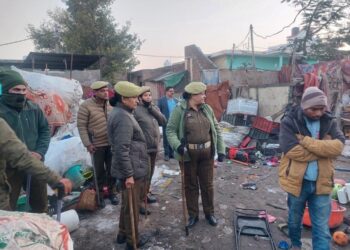If anything, the attack on the Army camp in Nagrota which killed seven soldiers including two officers is one more proof that the new tit-for-tat policy towards Pakistan isn’t yielding the desired outcome. Instead, the renewed shelling along the LoC may be only giving Pakistan an opportunity to push more militants into J&K.
This is apparent from a conspicuous rise in the infiltration this year. There has been a three-fold hike in infiltration into Kashmir. Against just 33 in 2015, as many as 105 militants have infiltrated into Kashmir in the first nine months of 2016 in 121 infiltration attempts, according to the information provided recently to Rajya Sabha by the Minister of State for Home Hansraj Ahir. The infiltration bids have since only gone up further. Besides, a recent security estimate, puts the number of active militants in Valley at 300 as against 100 or thereabouts over the past several years.
The rise in infiltration has complemented the local recruitment, which has seen a remarkable increase during the current uprising. According to estimates of J&K Police, around 50 youth joined militancy in the first 100 days of the turmoil, the highest such number in such a short period since early nineties. Some of these youth have joined from places which have seen least economic activity. One such place is Baramulla where thirteen youth are believed to have taken up gun. Two of the new recruits were killed in recent encounters in South Kashmir.
The surge in militant numbers has already led to a visible rise in the violence. As against 113 in 2015, the number of killings of militants, security personnel and the civilians has so far risen to around 245, a more than two-fold increase.
But it is the impact of the increased infiltration on the ground situation in Kashmir that is changing the ground situation in Kashmir and deeply worrying the security establishment in Kashmir. For it is mostly the Fidayeen from across the border who carry out the attacks on the security camps and cause the maximum damage, as Uri and now Nagrota attack prove.
Point is if the PM’s hardline policy on Pakistan was expected to reduce militant attacks in Kashmir, it has done the opposite. The militancy has only grown stronger in Valley, so has increased the frequency of attacks. On the contrary, a sustained and a meaningful dialogue geared to resolve the longstanding issues, including Kashmir, has helped lower the violence. The fact is attested to by the productive 2002-2007 engagement which had purportedly almost pulled off a Kashmir solution had the then Pakistan president Pervez Musharraf not lost the power in lawyers’ agitation.
Musharraf’s talks with former Prime Minister Manmohan Singh achieved a ceasefire agreement in 2003 which progressively brought down infiltration from 1504 in 2002 to 118 in 2015, according to the data provided by South Asia Terrorism Portal. Similarly, there was a progressive decrease in the killings in Kashmir: from 3022 killings of the security personnel, militants and civilians in 2003 to just 174 in 2015. But Modi’s penchant for an aggressive policy is threatening to reverse this trend. The only pragmatic way out is to go back to a purposeful engagement with solution of the disputes between the countries as its goal.
Follow this link to join our WhatsApp group: Join Now
Be Part of Quality Journalism |
Quality journalism takes a lot of time, money and hard work to produce and despite all the hardships we still do it. Our reporters and editors are working overtime in Kashmir and beyond to cover what you care about, break big stories, and expose injustices that can change lives. Today more people are reading Kashmir Observer than ever, but only a handful are paying while advertising revenues are falling fast. |
| ACT NOW |
| MONTHLY | Rs 100 | |
| YEARLY | Rs 1000 | |
| LIFETIME | Rs 10000 | |








